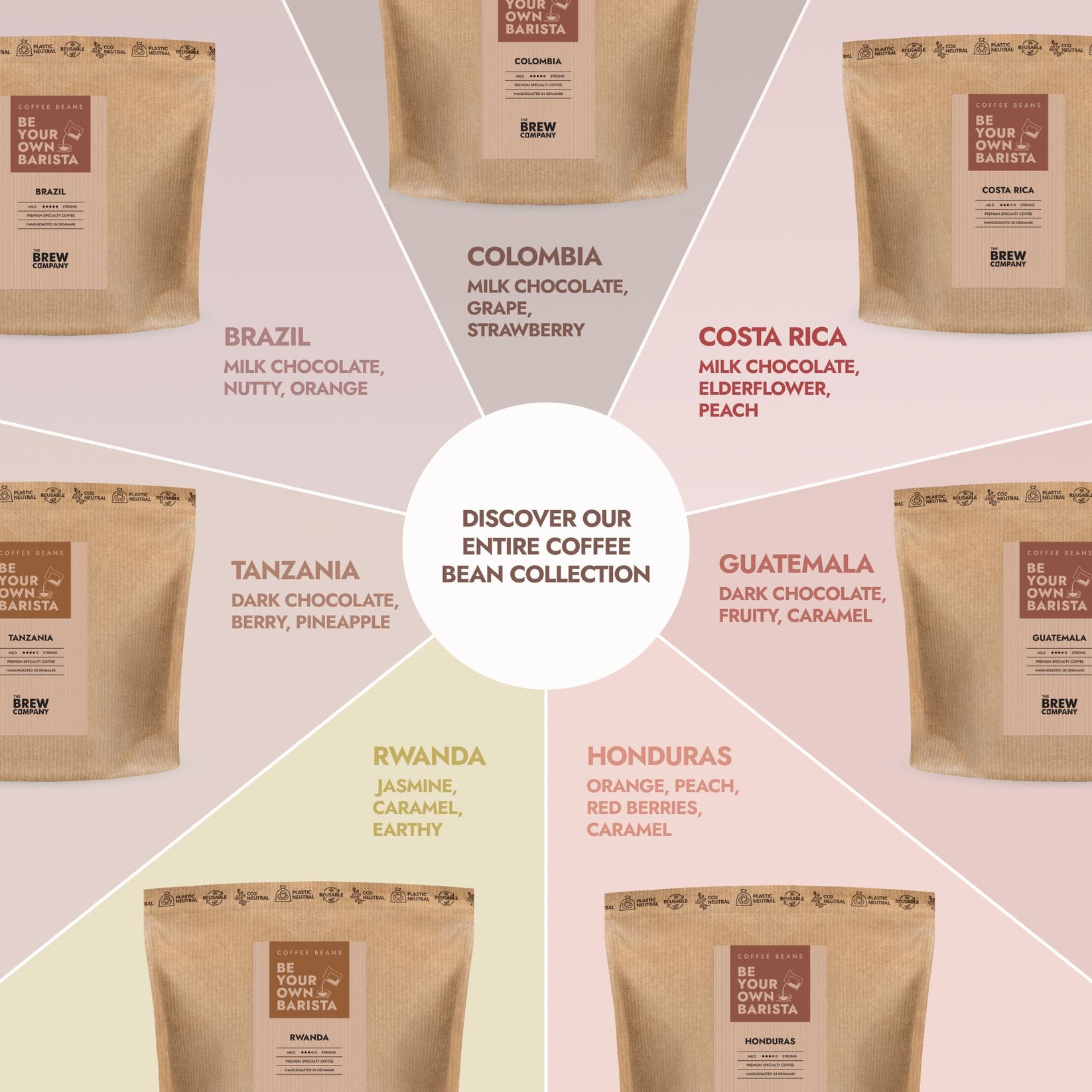Updated on: 2025-09-21
- Key benefits of single-origin coffee beans
- Step-by-step guide to brewing single-origin beans for pour-over
- FAQ: single-origin coffee beans and brewing basics
For many coffee lovers, single-origin coffee beans are a thoughtful way to taste a place. By focusing on beans from one country, region, or even one farm, you can discover distinct flavor notes and a clearer sense of terroir. If you are exploring specialty coffee beans, you may also come across single-estate coffee beans and micro-lot coffee — terms that reflect even tighter traceability. This article gently walks through the benefits of single-origin coffee beans, a step-by-step pour-over method, and answers to common questions. If you feel curious about exploring roasters and offerings, you may find it helpful to browse options from Orova Coffee.
Key benefits of single-origin coffee beans
- Flavor clarity and terroir: Single-origin coffee beans tend to display a focused flavor profile that reflects a specific region or farm. You might notice florals from Ethiopia, cocoa from parts of Latin America, or stone fruit from Kenya. This clarity often helps you compare roasts side by side.
- Traceability and transparency: With single-origin and single-estate coffee beans, it is usually easier to learn about the farm, altitude, and processing method. This information can guide your brewing choices and taste expectations.
- Consistency in dialing-in: Because the beans come from a defined source, it can be simpler to fine-tune grind size, water temperature, and dose. Many home brewers feel that consistent input leads to a more consistent cup.
- Educational value: Exploring different single-origin coffee beans helps you build a sensory map. For example, cupping several lots may teach you how a washed process differs from a natural process, or how elevation affects acidity.
- Ethical alignment: Specialty coffee often highlights relationships throughout the supply chain. While practices vary, single-origin labeling can encourage more visibility around sourcing. If ethics matter to you, a transparent coffee story can feel reassuring.
- Great for pour-over: Many people enjoy the precision of pour-over to reveal nuance. It can be a nice match for the best single-origin coffee beans for pour-over, as the method tends to emphasize clarity and balance.
- Discovering micro-lots: Micro-lot coffee, usually from a small, distinct harvest, can feature rare or experimental processing and vivid flavors. These tiny lots may offer a special tasting experience for enthusiasts.
Step-by-step guide to brewing single-origin beans for pour-over
This gentle method is designed to bring out nuance while keeping steps easy to follow. It works well for many single-origin coffee beans, including light and medium roasts. Please adjust the details to your taste and equipment.
Step 1: Select your beans
Choosing fresh, well-roasted beans sets a helpful foundation. If you enjoy bright florals and citrus, Ethiopian single-origin coffee beans light roast may feel like a pleasant starting point. If you prefer chocolate, nuts, or caramel, consider a Latin American lot with a washed process. Single-estate coffee beans and micro-lot coffee can be rewarding for focused tastings. When you are ready to explore, you may appreciate the options highlighted on Shop coffee.
Step 2: Measure and grind
A common starting ratio for pour-over is 1:15 to 1:17 (coffee to water by weight). For a 20 g dose, that is about 300–340 g of water. A medium or medium-fine grind often supports a balanced extraction. If your cup tastes sour or thin, a slightly finer grind might help. If it tastes bitter or astringent, a slightly coarser grind might feel better.
Step 3: Heat your water
Many brewers find a water temperature in the range that is just off-boil works well for single-origin coffee beans, especially lighter roasts. If your kettle does not have a thermometer, letting the water rest for a brief moment after boiling can be a simple approach.
Step 4: Rinse and prep the filter
Rinsing the paper filter helps reduce paper taste and preheats the brewer. Swirl out the rinse water so that the bed and server are warm and ready.
Step 5: Bloom the coffee
Start with a bloom of about 2–3 times the dose (for 20 g, pour 40–60 g of water). Let the coffee de-gas for 30–45 seconds. A calm, even bloom helps prepare the bed for steady extraction, which often suits the delicate flavors in single-origin coffee beans.
Step 6: Pulse pour in stages
Pour in gentle pulses to maintain an even bed. You might try 2–3 stages, keeping the water level steady and avoiding high turbulence. Aim for a total brew time of about 2:30–3:30, adjusting grind if your drawdown is much faster or slower. This approach is friendly to the best single-origin coffee beans for pour-over and can help express clarity.
Step 7: Finish the drawdown and serve
When the bed is flat and the last drips slow to a stop, your brew is ready. You may find that a brief swirl before serving integrates the layers of flavor.
Step 8: Taste and adjust
Take a small sip as the coffee cools. If it feels sharp or under-extracted, consider a finer grind or a slightly higher water temperature next time. If it feels heavy or bitter, consider a coarser grind or a gentler pour. Small changes can make a meaningful difference with single-origin coffee beans.
Step 9: Store beans well
Keep beans in a sealed, opaque container at room temperature. Many people find that buying in reasonable quantities and brewing within a few weeks of roasting supports flavor. If recurring deliveries feel convenient, you could explore Subscriptions.
As you repeat this routine, you may enjoy comparing different origins. For example, Ethiopian single-origin coffee beans light roast can show jasmine or lemon, while a Colombian single estate might lean toward cocoa and red fruit. Tasting them side by side creates a calm, instructive way to learn what you enjoy most.
FAQ: single-origin coffee beans and brewing basics
What does single-origin coffee mean?
Single-origin coffee beans come from one defined source. That source can be a country, a region, a cooperative, or a single farm. The goal is to highlight a sense of place. With tighter definitions, such as single-estate coffee beans, the coffee is from one farm or estate. This traceability supports a clearer flavor profile and often helps you tailor your brew method with confidence.
Are single-origin coffee beans better than blends?
“Better” depends on what you enjoy. Single-origin coffee beans usually offer distinct flavors that express location and processing style. Blends are carefully designed to create a balanced, consistent profile that remains stable throughout the year. If you enjoy exploring nuance, single-origin coffees can be delightful. If you prefer a steady, familiar taste, a well-crafted blend may feel more suitable. Many people keep both on hand for different moods.
What are single-estate coffee beans?
Single-estate coffee beans come from one farm or estate, often with detailed information about variety, elevation, and processing. This can make tasting and dialing-in very approachable. If you are curious about where to start, the collections and descriptions you find on roaster sites or resources such as Learn more can be helpful.
What is micro-lot coffee?
Micro-lot coffee refers to a very small, specific lot from a particular farm or block, often separated for its quality or unique characteristics. These lots may showcase special varieties or processing methods, and they can be a gentle way to experience something rare. Because quantities are limited, availability may vary. When you find a micro-lot you enjoy, noting your grind and recipe can help you recreate that experience.
Thank you for spending time with this guide. If you wish to continue learning about bean selection, roast styles, and brew techniques for single-origin coffee beans, you may enjoy exploring resources and offerings from Orova Coffee.

Coffee lover and blogger sharing brewing tips, bean reviews, and everything to make your daily cup a little better





